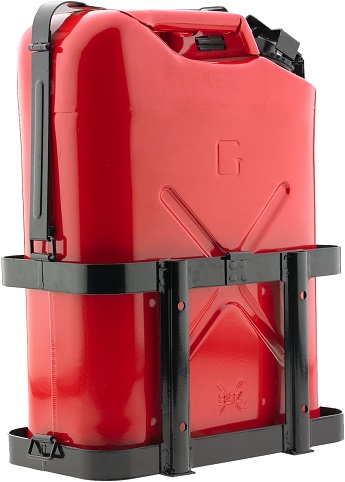Willys Jeep Oil Filter Canister Installation
Article by Mark Trotta
Up until the mid-fifties, oil filters were an option on most cars and trucks, and many Willys Jeeps left the factory without one. The lack of oil filtration certainly contributed to the fact that engines were being overhauled at 50,000 miles.
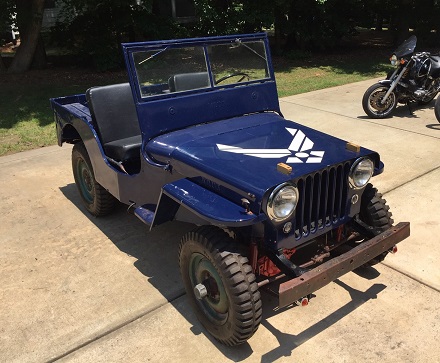
After the motor had been rebuilt on this 1948 Willys Jeep CJ2A, it was decided to retro-fit an oil filter.
This particular kit was purchased from KaiserWillys.com and included everything needed to install on Willys-Jeeps and Kaiser-Jeeps. This is not a factory part, but a period-correct reproduction of a Fram-style canister.
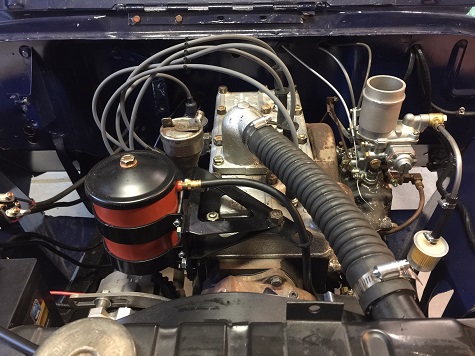
Remote oil filters like this one are a by-pass filtration system. This means the filter gets the oil from an oil galley, goes through the filter element, then goes to the bearings, and then returns the filtered oil to the sump.
____________________________________________
____________________________________________
The center tube in the canister has a small port hole to keep the oil under pressure when going to the outlet hose. In this type of system, only a small percent of engine oil actually gets filtered.
Bypass vs Full-Flow Filtering
Modern cars and trucks use a more efficient full-flow oil filtration system, where oil comes out of the oil pump, goes through the filter, through the motor and then returns to the engine bearings.
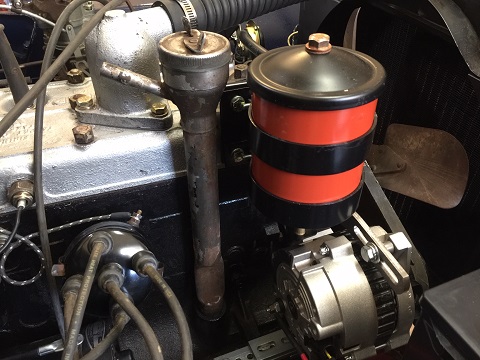
If your old Jeep has no oil filter, it's entirely up to you whether to add one or not. Letting dirt circulate inside an engine will significantly reduce bearing life, so any filtration is better than none. Truth be told, some owners choose to add a canister filter for appearance sake.
*************************
Oil Filter Canister Installation
This particular kit is designed to fit all 1946-1966 four-cylinder Jeeps, including CJ-2A, CJ-3A, and CJ5 models. Everything needed to install the oil filter is included with the kit; brackets, clamps, hoses, fittings, and an oil filter cartridge.
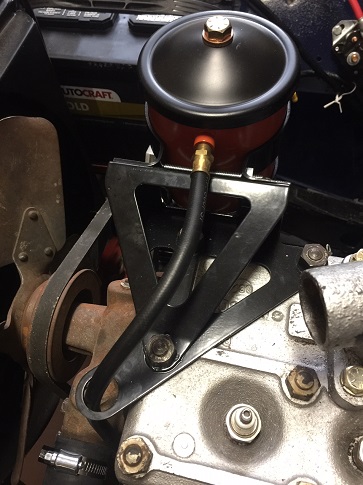
NOTE: Later Kaiser-Jeeps with the F-134 motor will have a slightly different installation procedure.
Outlet Hose Installation
A hydraulic hose attaches the bottom of the canister to the top of the timing gear cover. Filtered oil returns to the motor through this hose.
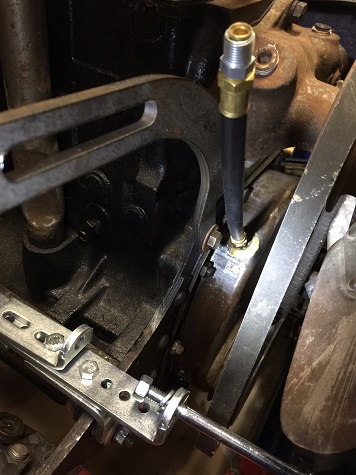
Straight-end fittings are used on both ends of the outlet hose. Removing the generator (or alternator in this case) allows better access to the top of the timing gear cover.
____________________________________________
____________________________________________
Canister Mounting Bracket
A black mounting bracket attaches the canister onto the cylinder head. To install the bracket, three cylinder head bolts need to be removed and reinstalled.
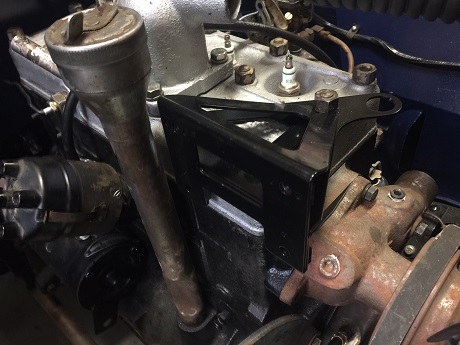
The canister mounts to the bracket with two C-brackets.
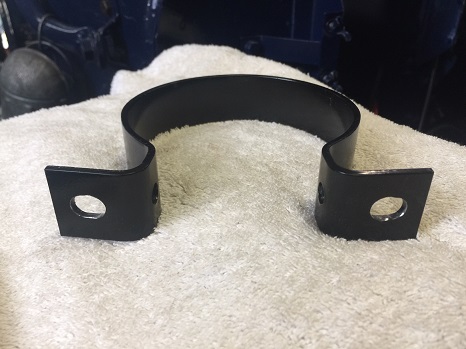
It was a struggle to get the two C-brackets to line up with the cylinder head bracket. Enlarging the bracket holes from .490" ID to .500" ID made for an easier fitment.
Inlet Hose Installation
The oil inlet hose comes from an oil galley on the left side of the block and comes up over the cylinder head to the top-left side of the canister (non-swivel end).
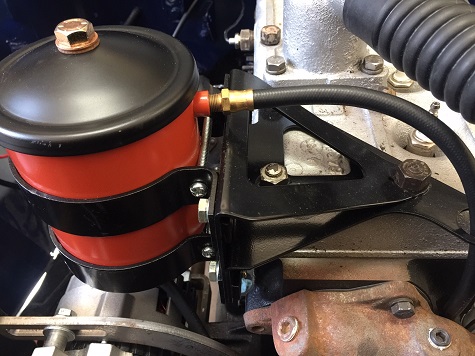
*************************
Fuel Pump Removal
Installing the inlet hose was a little tricky. The fuel pump needs to be removed to access the galley port, and it's a tight squeeze with the motor installed. I removed the lower radiator hose to make a little more room, which also allowed me to see better.
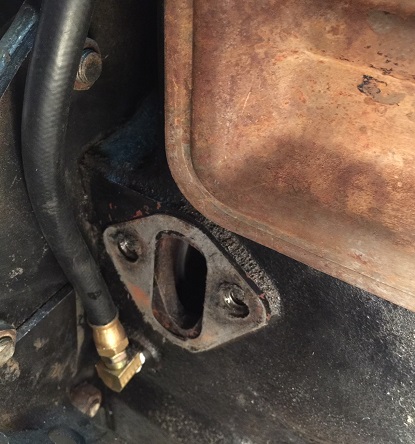
A 90 degree fitting is screwed into the block and faces upwards.
Fuel Pump Installation
After the fuel pump is off, you will be able to see (or at least feel) the fuel pump eccentric inside the block.
For easier installation, I crawled under the front of the motor, and with a 1-1/2" socket (or 38mm socket), rotated the crankshaft (with the Jeep in neutral of course). This takes the fuel pump arm off the high spot of the cam eccentric.
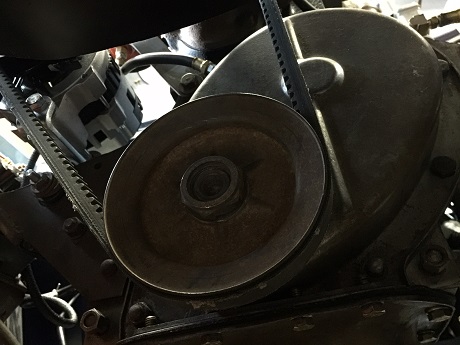
I replaced the original hex-head fuel pump bolts with Allen-head bolts, which fit easier into the tight space.
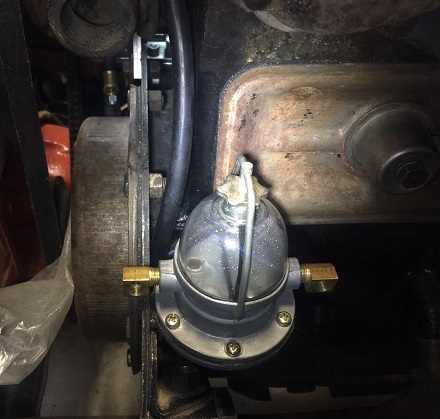
Tools Needed To Remove/Install Fuel Pump
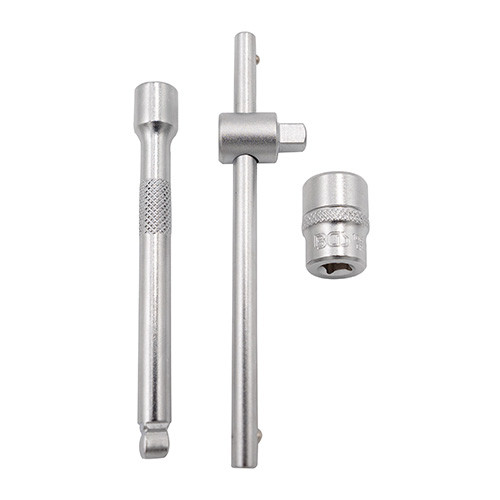
KaiserWillys offers a small tool package to help remove the fuel pump, which you can buy here.
*************************
Installation complete and looking good!
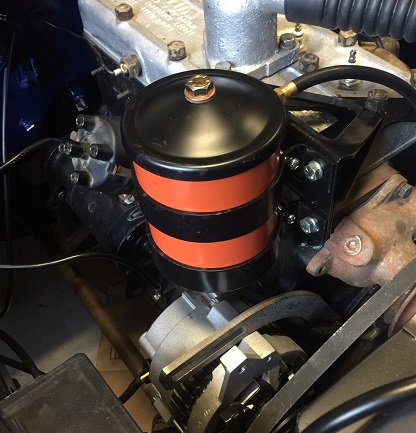
Note that the oil line passes through the large round hole on the cylinder head mounting bracket, then continues down to the fitting on the block. Installing a metal clip to one of the timing gear cover bolts will keep the oil line away from the hot engine.
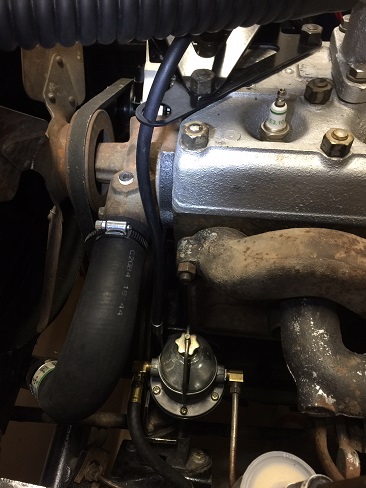
*************************
Conclusion
Not only does adding an oil filter help your Jeep's engine, having to change the oil less often will save you money. And another added benefit is, changing oil less frequently is an environmentally sound practice.
____________________________________________
____________________________________________
Misc Notes
With this type of canister, the oil filter needs to be manually drained. The filter element can be cleaned an re-used, but replacing it will give you better filtration.
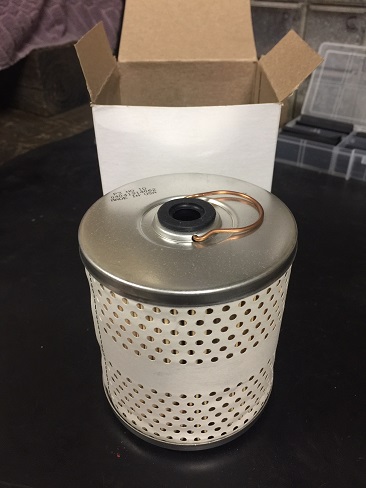
Due to the design and age of the old Willys engines, oil changes are recommended every 3,000 miles or less.
You're always at risk of breaking something when working on a 75 year-old vehicle! Any mechanical work done on a vintage Jeep should be done slowly and with caution.
*************************
Related Articles:
Best Oil for Classic Vehicles
CJ5 Engine Swap Choices
Restore An Old Jeep
